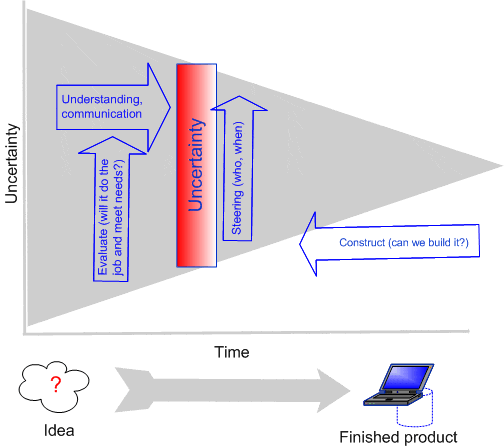Realistically speaking, every business venture will carry with it certain risks. It’s thus integral to the success of any business to pinpoint these risks, develop strategies to avoid them or mitigate their effects, and implement these strategies systematically.
Enterprise risk management is a methodology that takes a holistic, organization-wide view when identifying and preparing for any potential hazards to a company’s operations, objectives, or finances. Risk managers thus work to survey their firms as a whole and make decisions with the needs of the entire firm, rather than individual divisions or business units, in mind. This top-down approach also means that they most often implement risk management measures across the majority, if not all, of their company’s processes and activities.
These days, managers perform company-wide risk surveillance and assessment with the aid of sophisticated enterprise risk management software. Such software commonly contains tools that recognize and evaluate risks, suggest measures for risk mitigation, monitor and report on all company activities and processes and other useful features. These tools are designed to finely target different types of risks an organization might face. Thus, they frequently develop and prescribe solutions that are tailored to the specific type of risk under examination.
Some significant types of enterprise risks an effective EMR software is primed to address include—but are not limited to—the following:
Market Risk
Market risk is the risk of incurring financial losses due to factors that influence the performance of financial markets as a whole. Also called systematic risk, market risk tends to act upon the entire market at once, and its effects are frequently widespread and deep-reaching. Market risk can come, for instance, from fiscal events like recessions or fluctuations in interest rates. It can also arise from political upheavals or natural disasters, as well as other events that can be expected to disrupt economic activity in significant ways. Because it is systemic in nature, businesses can’t eliminate market risk by diversifying their offered goods and services. Most often, they can only alleviate the effects of market risk by hedging.
To effectively manage market risk, the best EMR software should be able to assess and measure risk for multiple portfolios. The software should also be flexible enough to compute and report on risk-based on whatever metrics the user sees fit to specify. Some possible parameters for risk reporting include defined time horizons, levels of confidence, seasonality, and others. This comprehensive approach to risk management enables companies to view market risk’s potential effects across their entire trading book. Risk managers can then develop strategies to regulate risk at the level of particular divisions or units while keeping the situation of the company as a whole in view.
Liquidity Risk
Because financial institutions frequently depend in large part on borrowed money to operate, they need to be able to pay these debts on time without suffering financial losses. This ability to pay in a timely manner, most often through the ready conversion of assets or investments into cash, is referred to as liquidity.
Liquidity risk, then, is the inability of a business or an individual to meet its payment obligations on time. A business may incur significant liquidity risk, for instance, when they are unable to sell an asset at a profitable price due to a lack of interested buyers or a flagging market. Businesses that face too much liquidity risk often have to work to sell their assets or generate additional revenue to make up the difference between their available liquid cash and their outstanding debts.
EMR software helps companies manage liquidity risk by ensuring continuous multi-jurisdictional compliance with regulatory guidelines. Whenever bank regulations are amended, these changes are translated into the software’s system as soon as possible, enabling organizations to meet even the tightest compliance deadlines. EMR software also prepares intensive stress testing frameworks to measure a company’s liquidity resilience and financial stability. The data gathered from these stress tests can then be utilized by managers to develop and implement contingency funding plans as necessary.
Credit Risk
Credit risk is the risk of financial loss a lender faces in the event that a borrower is unable to repay a loan or otherwise meet their financial obligations. Any type of credit a company may offer a customer—such as a mortgage, a credit card, or any other kind of loan—carries with it some measure of credit risk. Credit risk is also potentially incurred when bond issuers and insurance companies are unable to make timely payments.
Businesses often evaluate credit risk by keeping detailed risk profiles on current and prospective customers. These risk profiles often contain the following data, which are widely considered the most useful factors for calculating credit risk:
- The customer’s credit history
- Their ability to repay the loan
- Their available capital
- The terms of the loan
- Any associated collateral available to the customer
EMR software is able to efficiently record and analyze this data in the interest of providing a comprehensive, company-wide perspective on the overall credit risk an organization faces. The software can also compute other important credit risk metrics such as average delinquency ratios, average client default rates, and other parameters. The information in turn can help facilitate executive decision-making on how to effectively address credit risk scenarios and minimize losses.
Because there are many different financial hazards a business can face over the course of its life, having a varied and flexible toolkit to address these problems is crucial. The best EMR software will always come equipped with a wide array of functions to help companies develop targeted, problem-specific risk management strategies.





